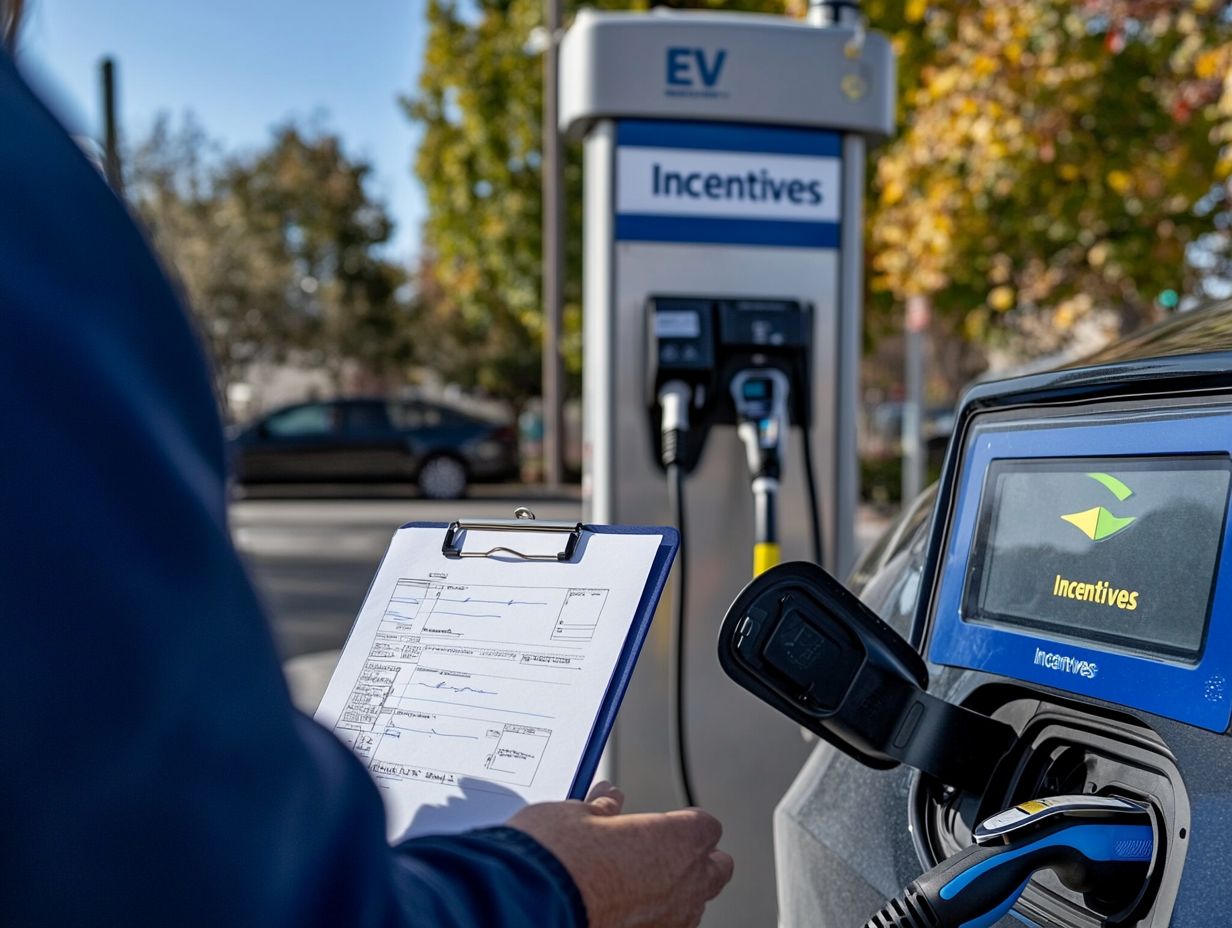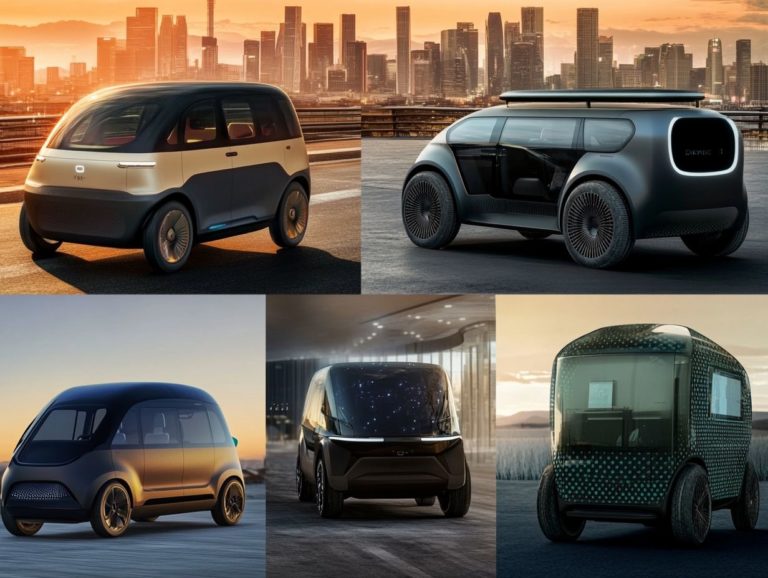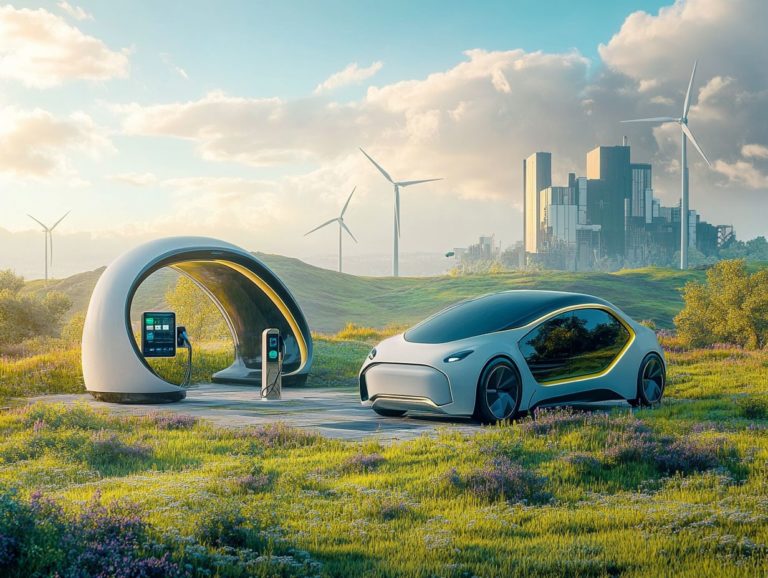5 Things to Know About EV Incentives This Year
As electric vehicles (EVs) grow in popularity, knowing the available incentives can greatly shape your decision to make the switch. This year brings significant updates on federal tax credits, state and local incentives, and income-based qualifications that could enhance your savings.
Many of these incentives change frequently, so staying informed is essential. Here are five key points about EV incentives designed to help you navigate this evolving landscape and maximize your benefits.
Contents
- Key Takeaways:
- 1. Federal Tax Credits Are Still Available for Some Models
- 2. State and Local Incentives Vary
- 3. Some Incentives Are Based on Income
- 4. Incentives May Be Phased Out Over Time
- 5. Incentives Can Change Yearly
- What Are the Different Types of EV Incentives Available?
- Frequently Asked Questions
- What Are EV Incentives?
- What Are the 5 Things to Know About EV Incentives This Year?
- Are federal tax credits still available for EVs?
- What types of state-level incentives are available for EVs?
- Can I get incentives for installing charging infrastructure at my home?
- How do I find out about EV incentives in my area?
Key Takeaways:

- Federal tax credits for EVs are still available for certain models this year. It s a great time to consider purchasing an electric vehicle!
- State and local incentives vary, so research your area to take advantage of potential savings.
- Some EV incentives are based on income, making them more accessible for lower-income families.
1. Federal Tax Credits Are Still Available for Some Models
Federal tax credits serve as a powerful incentive if you’re considering an electric vehicle. By utilizing these credits, you could save big on eligible models from brands like Tesla, Ford, and Chevrolet.
These credits can change based on the manufacturer’s sales volume and the specific model. Thanks to the Inflation Reduction Act, several models qualify for up to $7,500 in tax credits, depending on vehicle type and battery capacity.
These credits ease the financial burden of switching to an electric vehicle. Ownership is now more accessible than ever!
2. State and Local Incentives Vary
State and local incentives can significantly influence your overall cost of ownership. Financial benefits vary greatly based on where you live.
California offers generous programs, while Washington provides targeted support for lower-income households. These incentives often come as rebates, tax credits, or grants, greatly lowering the costs for home chargers or electric vehicle purchases.
Different regions adopt different strategies to promote electric vehicle adoption. For instance, California provides significant rebates that can exceed several thousand dollars, while other states may offer modest rebates or utility discounts.
Many programs are tailored for low-income families. This helps ensure that everyone has access to electric mobility.
3. Some Incentives Are Based on Income
Income qualifications are essential in determining your eligibility for various electric vehicle incentives, especially if you’re part of a lower-income household looking to transition to greener vehicles.
Many local and state EV incentives come with special provisions that provide increased money help to those with lower incomes. This ensures that the advantages of switching to EVs are accessible to a wider audience.
Take the Federal EV Tax Credit, for example; it offers larger deductions for individuals who meet specific income thresholds. State-level initiatives often take things a step further, boasting even more generous structures. Such programs can significantly lower the upfront cost of electric vehicles, making them a viable option for families on a tight budget.
Using a savings calculator can give you valuable insights into potential long-term savings on fuel and maintenance costs, illustrating the overall financial benefits of choosing electric.
Many incentives also offer reduced registration fees and access to carpool lanes, making eco-friendly vehicles even more appealing.
4. Incentives May Be Phased Out Over Time

As the electric vehicle market matures, you may find that many incentives are likely to be phased out over time, affecting your potential to benefit from significant federal tax credits and state incentives aimed at promoting EV adoption.
If you delay, you might face higher electric costs soon and a potential shift back toward gas vehicles if you don t act swiftly to take advantage of the available benefits.
The timeline for phasing out these incentives varies depending on state and federal policies, making it essential for you to stay informed.
As manufacturers ramp up production, the initial excitement surrounding electric vehicles could diminish without the financial support these incentives offer.
As EV prices rise because subsidies are decreasing, you might start to reconsider your investment in electric models.
Embracing these current incentives isn t just about saving money; it’s vital for growth in EV adoption and maintaining momentum toward a more sustainable future.
5. Incentives Can Change Yearly
The landscape of electric vehicle incentives is ever-evolving, with annual changes that can significantly influence your cost of ownership in the dynamic EV market. Staying informed about government incentives for EV buyers in 2024 is crucial for maximizing your savings.
Adjustments in federal tax credits, state programs, and local incentives can shift dramatically based on governmental policies and budget allocations, making it crucial for you to stay informed about the latest developments.
These factors not only affect the final price of an electric vehicle but also impact your financing options and resale values.
For example, when tax incentives fluctuate, they can either entice you to make a purchase or hold you back, ultimately influencing market demand.
Being fully aware of these changes will empower you to understand how the incentives align with your personal budget and long-term goals.
By monitoring shifts in legislation and available incentives, you can capitalize on every possible benefit, ensuring that you make informed and cost-effective choices in an increasingly competitive landscape.
Stay informed to ensure you don’t miss out on saving money!
What Are the Different Types of EV Incentives Available?
You ll find a variety of electric vehicle incentives available to you, including federal tax credits, state and local rebates, and specialized programs aimed at promoting the adoption of electric vehicles.
These incentives play a significant role in making the shift to greener transportation options more affordable.
By understanding the different categories of incentives, you can save more money and fully appreciate the benefits of choosing an electric vehicle over traditional gas models.
These incentives encourage environmentally conscious choices. Federal tax credits can save you thousands on your tax bill. State rebates often provide direct cash back when you purchase or lease an electric vehicle.
Some cities even offer extra perks, like access to carpool lanes and complimentary charging stations.
By leveraging these various incentives, you can reduce your initial investment, making electric vehicles a more accessible option for a wider audience. Ultimately, you ll be contributing to a significant reduction in carbon emissions while enjoying the advantages of a modern, eco-friendly ride.
What Are the Qualifications for Federal Tax Credits?
To qualify for federal tax credits on electric vehicles, you must follow specific guidelines established by the IRS. This ensures that your vehicle meets the necessary criteria and that you comply with relevant tax regulations.
These qualifications are designed to encourage you to make an affordable switch to electric vehicles while maximizing your tax deductions and financial benefits.
Your vehicle needs to be of an eligible type, typically a new electric or plug-in hybrid model, which combines an electric motor with a gasoline engine, purchased after the date specified by the IRS.
There is often a cap on the credit amount based on your annual income, directing these incentives to those who stand to benefit the most.
By grasping these criteria, you can strategically plan your purchase timing and financial decisions, paving the way for significant savings and making the transition to a more sustainable vehicle option much simpler.
How Do State and Local Incentives Differ?

State and local incentives for electric vehicles can vary dramatically in terms of structure, amount, and eligibility requirements. These differences reflect the unique policies and priorities of each region. Take California s extensive EV incentives compared to those in other states, for example.
While New York might offer substantial tax credits and rebates aimed at promoting clean energy vehicles, smaller localities often provide extra perks like free charging stations or reduced registration fees.
Some states may offer limited or even no incentives at the local level, underscoring the importance of doing your homework.
By being aware of these differences, you can uncover significant savings that dramatically reduce the overall cost of ownership. This enhances your access to greener transportation options and contributes to a more sustainable automotive market.
Act now! Explore available incentives in your area or consult a tax professional for personalized advice.
What Are the Income Limits for EV Incentives?
Income limits play a key role in your eligibility for electric vehicle incentives. They ensure that these programs support lower-income households as they transition to more sustainable transportation options.
These income qualifications significantly influence the availability of tax credits and rebates. This ultimately enhances your benefits if you need them most.
By establishing specific income thresholds, various initiatives tailor assistance to individuals and families at different financial levels. This widens access to affordable electric vehicle options.
This thoughtful segmentation ensures that those facing economic challenges can more readily take advantage of incentives. It promotes a shift toward cleaner transportation.
The impact of these income limits on your access is profound. They not only lower the upfront costs of electric vehicles but also foster a sense of inclusivity in the broader mission of reducing carbon footprints.
Consequently, aligning income qualifications with sustainable development goals enhances the overall appeal of electric vehicles. They become a practical choice for you and many others.
How Can Businesses Benefit from EV Incentives?
Take advantage of various electric vehicle incentives to enhance your sustainability efforts. You can reap significant tax credits and cost savings on vehicle purchases and operational expenses.
These incentives facilitate your transition to electric fleets while providing broader consumer benefits in terms of business accountability and environmental stewardship.
By tapping into federal tax credits, you can dramatically reduce your upfront costs. This makes investments in electric vehicles more accessible than ever.
Consider a prominent logistics company that successfully transitioned a portion of its fleet to electric vehicles. They capitalized on generous state incentives that further minimized their total expenditures.
These initiatives have not only lowered operational costs thanks to reduced fuel and maintenance expenses but have also elevated their brand image in a marketplace increasingly focused on sustainability.
Through these examples, it’s clear that adopting electric vehicles is not merely a green initiative; it s a financially sound strategy that can significantly enhance your company s bottom line.
What Are the Predictions for Future EV Incentives?
Predictions for future electric vehicle incentives indicate a movement toward more streamlined and targeted programs. These initiatives are designed to adapt to the evolving needs of the EV market, potentially making electric vehicles more affordable and accessible for you.
As more automakers join the fray and technology continues to advance, the landscape of available incentives is likely to shift. This opens up new avenues for savings.
This evolution may feature programs specifically tailored to low-income households. It promotes broader adoption across diverse demographics.
Shifts in government policy may drive climate goals, emphasizing sustainable transportation solutions. This will cultivate a more robust electric vehicle ecosystem.
As these developments unfold, you can expect increased consumer confidence. This will undoubtedly propel the overall growth of the electric vehicle market.
More individuals will begin to view EVs as not just a choice but a viable and economical option.
Frequently Asked Questions

What Are EV Incentives?
EV incentives are financial benefits or rewards offered by governments, organizations, or companies to promote the adoption and use of electric vehicles (EVs).
What Are the 5 Things to Know About EV Incentives This Year?
The 5 things to know about EV incentives this year are: 1) the availability of federal tax credits, 2) state-level incentives, 3) utility company rebates, 4) manufacturer incentives, and 5) charging infrastructure incentives.
Have more questions? Reach out to us!
Are federal tax credits still available for EVs?
Exciting news! Federal tax credits for electric vehicles (EVs) are still available this year. However, the amount of credit depends on the battery size and may phase out for certain manufacturers after they reach a specific number of EV sales.
What types of state-level incentives are available for EVs?
States offer various incentives for EVs, including tax credits, rebates, or exemptions from certain fees. Some states also provide extra incentives for low-income individuals and for buying used electric vehicles.
Can I get incentives for installing charging infrastructure at my home?
Yes! Many utility companies offer rebates or discounts for installing EV charging equipment at home. Additionally, some states provide tax credits or rebates for home charging setups.
How do I find out about EV incentives in my area?
You can discover available EV incentives by checking government websites or talking to local EV dealerships. Online tools like the Alternative Fuels Data Center’s State Incentives and Laws Database can also be helpful.






